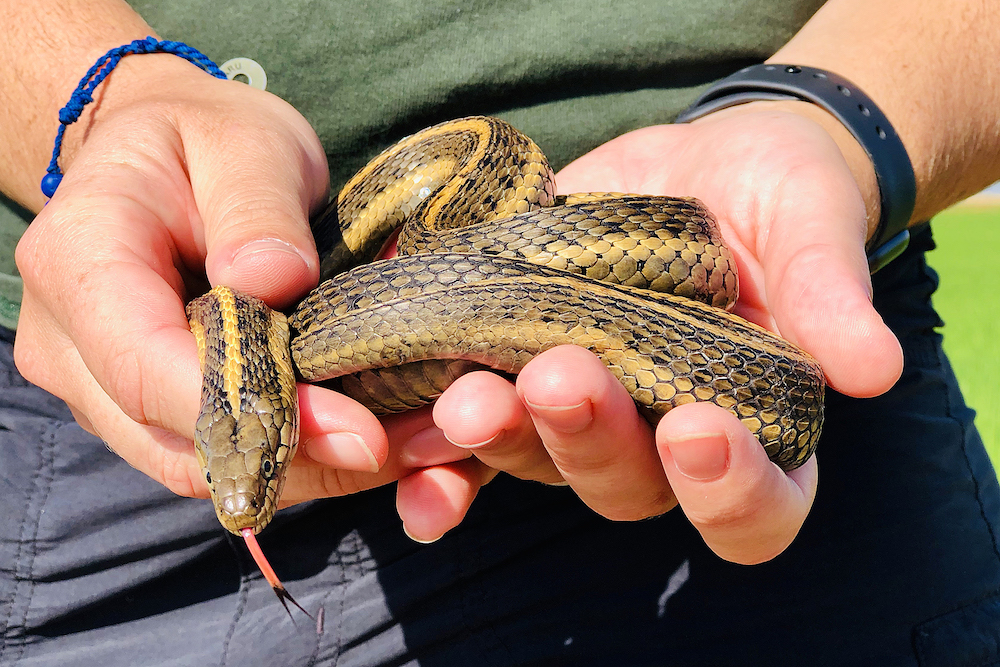Reptiles and Amphibians in Rice
By Luke Matthews
Reptiles and amphibians are not as visible as birds or mammals; however, they are also very common throughout rice country in the Sacramento Valley. There are a wide variety of reptiles that can thrive on a rice farm but finding and identifying them can be difficult. Some of these species are Southern Alligator Lizards, Western Fence Lizards, Western Skinks, Pacific Gophersnakes, California Kingsnakes, Common Gartersnakes and Western Rattlesnakes. In addition to these species, there are a few water-dependent reptiles and amphibians that are common in the flooded habitats provided by rice agriculture. These are the Giant Gartersnake, Western Pond Turtle and American Bullfrog.

The Giant Gartersnake is federally listed as a threatened species due to population declines and over 90 percent habitat loss. Due to the loss of habitat, these gartersnake utilize the remaining ponds and wetlands in the Sacramento Valley. However, ricelands, sloughs, irrigation canals and ditches are now a major part of their core habitat and they are found throughout the rice growing region. In some areas rice fields and their water conveyance systems provide the only suitable habitat for these threatened snakes. These “giant” snakes are the largest gartersnake species but despite their name they do not typically get longer five feet. Giant Gartersnakes are a highly aquatic species and they feed mostly on fish, tadpoles, and frogs (including the invasive American Bullfrog).

Western Pond Turtles are another common reptile species found in canals, sloughs and irrigation ditches throughout rice country. These turtles are listed as a species of special concern in by the California Department of Fish and Wildlife due to population reductions and habitat fragmentation. Although they are largely aquatic you can see these turtles basking on land, rocks, and logs during the day. During the winter Western Pond Turtles will typically hibernate in burrows away from the water to be protected from flooding. Their diet consists primarily of fish, invertebrates, and carrion although they do eat some aquatic vegetation. They are the only native freshwater turtle in this region but they are often confused with Red-Eared Sliders, a non-native turtle species that is found throughout much of their range.
The American Bullfrog is the most common amphibian found in rice country. Unlike the Giant Gartersnake and Western Pond Turtle, the American Bullfrog is a non-native species. Bullfrogs are native to the South Eastern United States and were introduced to the Western U.S., South America, Europe and parts of Asia as a food source. After their introduction, bullfrogs quickly spread throughout California and are considered to be an “invasive species”. They can be found in most rice fields and most slow moving water conveyance systems throughout rice country. Bullfrogs are aggressive, indiscriminate carnivores and, as a result, they pose a threat to some of the native amphibians, reptiles, and fish species. However, bullfrogs can provide a valuable food source to native wildlife as they are also consumed by a wide variety of birds, fish, and reptiles.
Reptiles and amphibians are most active in the summer months so this is the time pf year to try your hand at finding and identifying some of our more skittish wildlife species.
Luke Matthews is the Wildlife Programs Manager for the California Rice Commission






